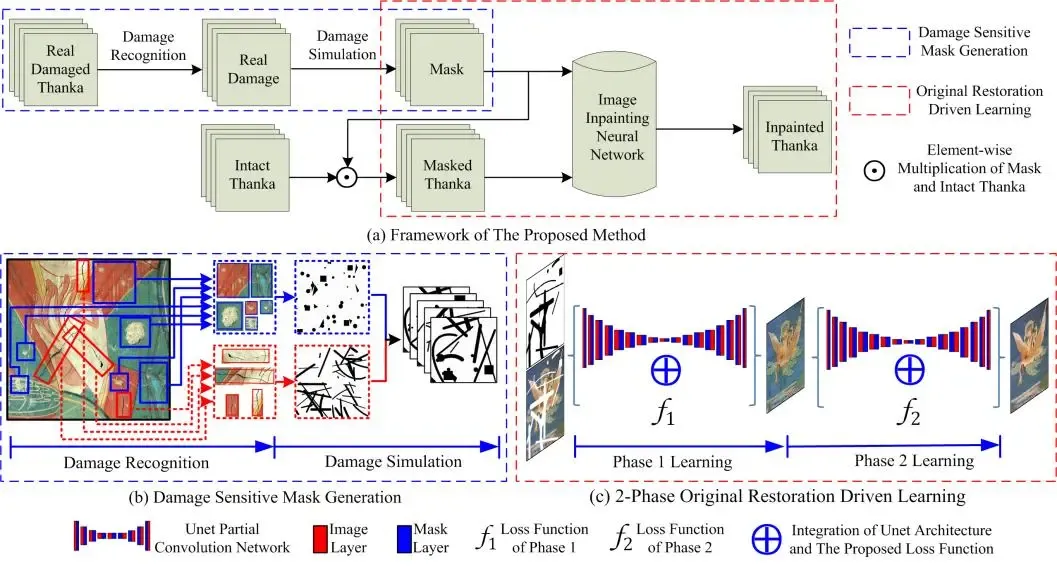Damage Sensitive and Original Restoration Driven Thanka Mural Inpainting
Author(s):Wang N., Wang W., Hu W., Fenster A., Li S.
Published In:Peng Y. et al. (eds) Pattern Recognition and Computer Vision. PRCV 2020. Lecture Notes in Computer Science, vol 12305. Springer, Cham.
Cite:Wang, N., Wang, W., Hu, W., Fenster, A., Li, S. (2020). Damage Sensitive and Original Restoration Driven Thanka Mural Inpainting. In: Peng, Y., et al. Pattern Recognition and Computer Vision. PRCV 2020. Lecture Notes in Computer Science(), vol 12305. Springer, Cham. https://doi.org/10.1007/978-3-030-60633-6_12
Thangka murals are an important part of the cultural heritage of Tibet, but many precious murals were damaged during the Tibetan history. Three reasons cause existing methods to fail to provide a feasible solution for Thanka mural restoration:
- damaged Thanka murals contain multiple large irregular broken areas;
- damaged Thanka murals should be repaired with the original content instead of imaginary content;
- there is no large Thanka dataset for training. We propose a damage sensitive and original restoration driven (DSORD) Thanka inpainting method to resolve this problem.
The proposed method consists of two parts. In the first part, instead of using existing arbitrary mask sets, we propose a novel mask generation method to simulate real damage of the Thanka murals, both masked Thanka and the mask generated by our method are inputted into a partial convolution neural network for training, which makes our model familiar with a variety of irregular simulated damages; and in the second part, we propose a 2-phase original-restoration-driven learning method to guide the model to restore the original content of the Thanka mural. Experiments on both simulated and real damage demonstrated that our DSORD approach performed well on a small dataset (N = 3000), generated more realistic content, and restored better the damaged Thanka murals.
